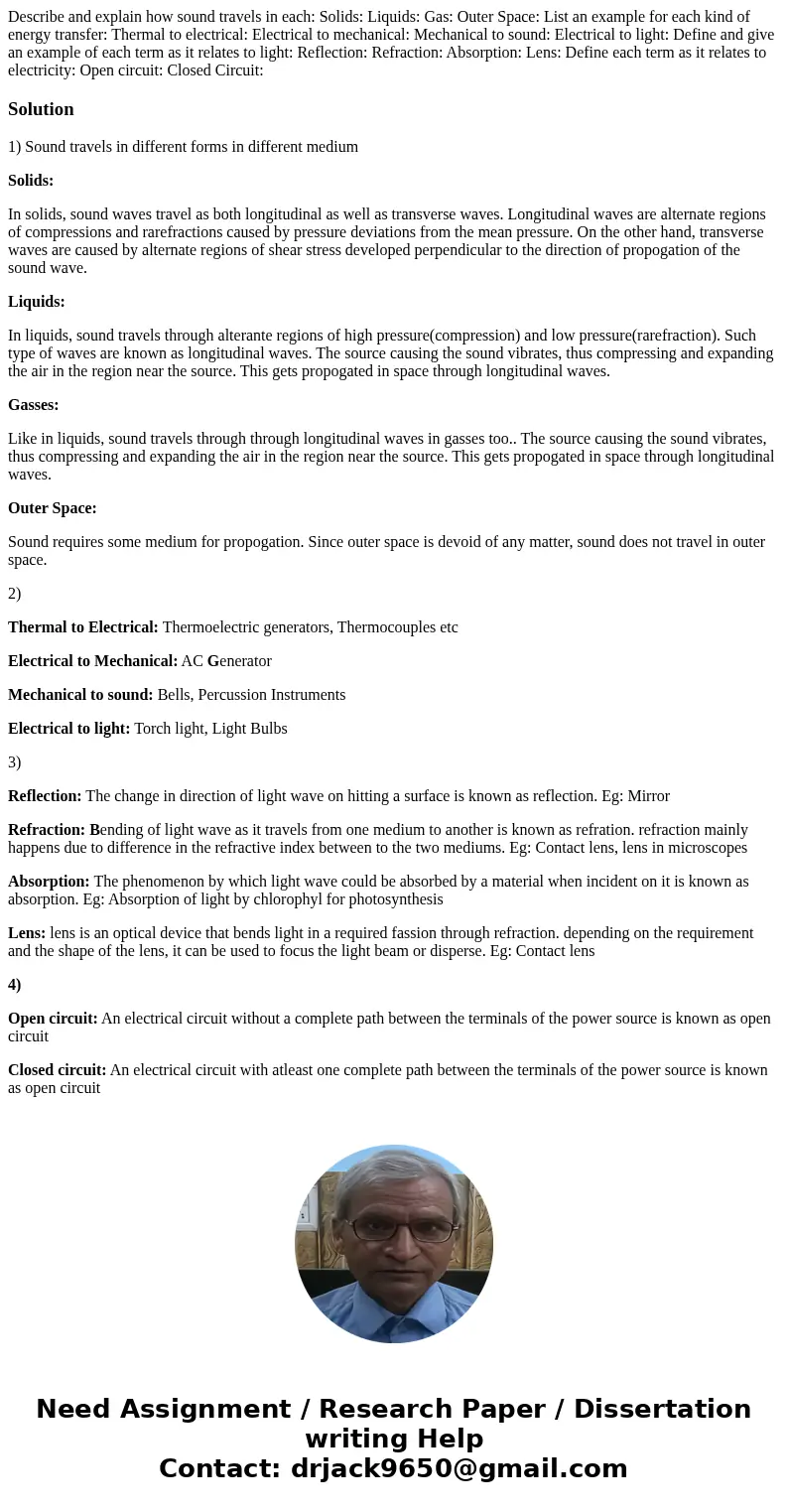Describe and explain how sound travels in each Solids Liquid
Solution
1) Sound travels in different forms in different medium
Solids:
In solids, sound waves travel as both longitudinal as well as transverse waves. Longitudinal waves are alternate regions of compressions and rarefractions caused by pressure deviations from the mean pressure. On the other hand, transverse waves are caused by alternate regions of shear stress developed perpendicular to the direction of propogation of the sound wave.
Liquids:
In liquids, sound travels through alterante regions of high pressure(compression) and low pressure(rarefraction). Such type of waves are known as longitudinal waves. The source causing the sound vibrates, thus compressing and expanding the air in the region near the source. This gets propogated in space through longitudinal waves.
Gasses:
Like in liquids, sound travels through through longitudinal waves in gasses too.. The source causing the sound vibrates, thus compressing and expanding the air in the region near the source. This gets propogated in space through longitudinal waves.
Outer Space:
Sound requires some medium for propogation. Since outer space is devoid of any matter, sound does not travel in outer space.
2)
Thermal to Electrical: Thermoelectric generators, Thermocouples etc
Electrical to Mechanical: AC Generator
Mechanical to sound: Bells, Percussion Instruments
Electrical to light: Torch light, Light Bulbs
3)
Reflection: The change in direction of light wave on hitting a surface is known as reflection. Eg: Mirror
Refraction: Bending of light wave as it travels from one medium to another is known as refration. refraction mainly happens due to difference in the refractive index between to the two mediums. Eg: Contact lens, lens in microscopes
Absorption: The phenomenon by which light wave could be absorbed by a material when incident on it is known as absorption. Eg: Absorption of light by chlorophyl for photosynthesis
Lens: lens is an optical device that bends light in a required fassion through refraction. depending on the requirement and the shape of the lens, it can be used to focus the light beam or disperse. Eg: Contact lens
4)
Open circuit: An electrical circuit without a complete path between the terminals of the power source is known as open circuit
Closed circuit: An electrical circuit with atleast one complete path between the terminals of the power source is known as open circuit

 Homework Sourse
Homework Sourse